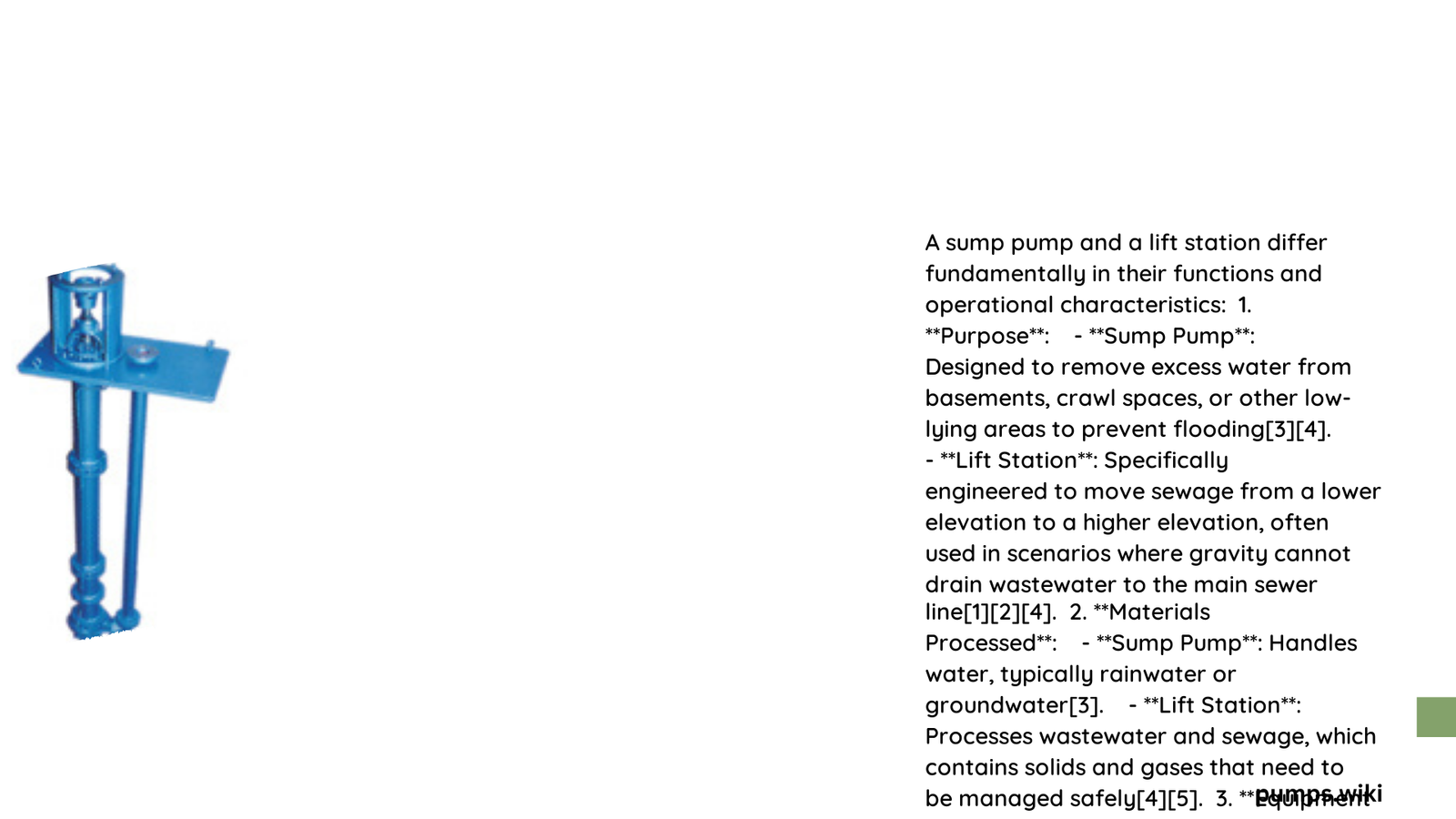Sump pumps and lift stations are critical water management systems with distinct operational purposes. While sump pumps protect basements from groundwater flooding by removing water from a pit, lift stations transport sewage from lower to higher elevations, typically in areas where gravity-based drainage is impossible. Understanding their unique characteristics helps homeowners choose the right solution for their specific water management challenges.
What Are the Core Functional Differences?
How Do Sump Pumps Operate?
Sump pumps are compact water removal devices installed in basement floor pits. They activate automatically when water levels rise, using float switches to trigger pumping action. Key characteristics include:
- Location: Basement floor pit
- Primary Function: Prevent basement flooding
- Activation Method: Float switch mechanism
- Water Destination: Ground or storm drain
How Do Lift Stations Function?
Lift stations are complex wastewater transportation systems designed to move sewage from lower to higher elevations. They consist of:
- Underground Tank: Wet well for sewage collection
- Primary Function: Transport sewage against gravity
- Pump Mechanism: Grinder pumps with float switch activation
- Destination: Main residential waste line or municipal sewer
What Are the Cost Implications?

| System Type | Initial Purchase | Installation Cost | Annual Maintenance |
|---|---|---|---|
| Sump Pump | $100 – $1,000 | $200 – $1,500 | $50 – $200 |
| Lift Station | $3,000 – $10,000 | $5,000 – $20,000 | $500 – $2,000 |
What Environments Suit Each System?
Ideal Scenarios for Sump Pumps
- Homes near rivers or streams
- Areas with high groundwater levels
- Basement flood prevention
- Low-lying geographical locations
Ideal Scenarios for Lift Stations
- Basements with drainage below main sewer line
- New construction requiring uphill sewage movement
- Areas without natural gravitational drainage
- Commercial and residential complex waste management
What Maintenance Challenges Exist?
Sump Pump Maintenance Considerations
- Quarterly system inspections
- Discharge pipe clearance checks
- Float switch functionality testing
- Pump replacement every 5-10 years
Lift Station Maintenance Requirements
- Biennial comprehensive inspections
- Wet well cleaning
- Grinder pump assessments
- Ventilation and gas monitoring
- Preventing septic system complications
What Technical Specifications Matter?
Sump Pump Technical Details
- Power Range: 1/3 to 1/2 horsepower
- Voltage: Typically 110-120V
- Pumping Capacity: 30-50 gallons per minute
- Materials: Cast iron or thermoplastic construction
Lift Station Technical Specifications
- Power Range: 1-5 horsepower
- Voltage: 220-440V
- Pumping Capacity: 100-500 gallons per minute
- Materials: Stainless steel and specialized composites
What Are Potential Limitations?
Sump Pump Limitations
- Dependent on electrical power
- Limited pumping capacity
- Potential backup during heavy rainfall
- Requires periodic maintenance
Lift Station Limitations
- Higher installation complexity
- Significant initial investment
- Regular professional maintenance
- Risk of mechanical failures
Professional Recommendations
For homeowners considering water management solutions, professional assessment remains crucial. Factors like geographical location, water table, property layout, and local building codes significantly influence system selection.
Consulting a licensed plumbing professional can help determine the most appropriate solution for specific residential or commercial requirements.
References:
– Las Vegas Septic Service
– Scott Home Inspection
– AiRCO Mechanical
